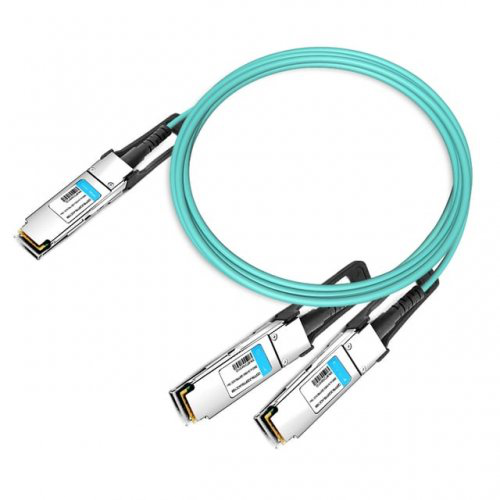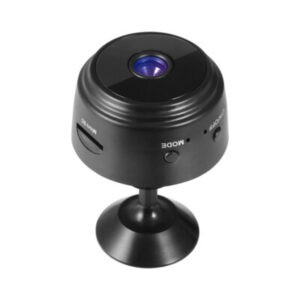How to Extend the Reach of QSFP-DD Networks Using Advanced Optical Amplification Techniques
Growing demands for high-bandwidth data transport across increasingly dense, long-haul, and data centre interconnect (DCI) environments have placed QSFP-DD (Quad...

Growing demands for high-bandwidth data transport across increasingly dense, long-haul, and data centre interconnect (DCI) environments have placed QSFP-DD (Quad Small Form-Factor Pluggable Double Density) modules at the centre of next-generation network architectures.
Supporting 400G and beyond, QSFP-DD transceivers are critical to hyperscale, cloud, and telecom applications, yet their inherent reach limitations remain a key challenge in real-world deployment.
To bridge the distance gap without compromising signal integrity or incurring massive infrastructure costs, advanced optical amplification techniques—particularly Raman amplification, hybrid Erbium-Doped Fibre Amplifiers (EDFAs), and newer coherent-friendly gain schemes—are being deployed with growing sophistication.
The QSFP-DD Challenge: Performance Meets Physical Limits
QSFP-DD transceivers are designed for high-density environments, supporting data rates of 400 Gbps and scalable up to 800 Gbps via 8x50G or 8x100G lanes. However, the optical power budget and chromatic dispersion limitations of these modules cap their effective reach.
For instance, a standard QSFP-DD 400GBASE-LR8 module is typically limited to 10 km without amplification, while coherent variants like 400G-ZR push that boundary to 80–120 km—but not without complexity and cost.
Modern network operators need to extend these modules well beyond metro distances into regional and long-haul territories, where attenuation, dispersion, and OSNR degradation pose significant bottlenecks. This is where optical amplification enters the equation—not merely as a distance extender, but as a performance enhancer.
EDFAs: The Workhorse of Optical Amplification
Erbium-Doped Fibre Amplifiers have long served as the backbone of optical amplification for wavelengths within the C-band (1530–1565 nm), which aligns perfectly with QSFP-DD LR8 and ZR modules.
EDFAs amplify signals without requiring optical-electrical-optical (OEO) conversion, delivering high gain (~30–35 dB) with low noise figures (~4.5–5 dB). However, conventional EDFAs are point amplifiers: they amplify the signal at discrete sites, which can lead to signal degradation over extended spans without regeneration.
For 400G and 800G coherent signals, EDFAs are increasingly being used in tandem with dispersion compensation modules (DCMs) or built into compact inline amplifiers for space-constrained environments. Despite their strengths, EDFAs alone may not suffice for ultra-long-distance QSFP-DD deployments, especially where OSNR thresholds are extremely tight.

Raman Amplification: Distributed Gain for High-Performance Links
To meet the SNR demands of high-order modulation formats like 16-QAM and 64-QAM used in 400G coherent QSFP-DD, Raman amplification provides a more effective approach. Unlike EDFAs, Raman amplifiers offer distributed gain by using the transmission fiber itself as the gain medium, excited by high-power pump lasers typically in the 1420–1500 nm range.
Key advantages include:
- Lower noise figure: Raman amplifiers can achieve noise figures as low as 2 dB, critical for long-haul 400G+ transport.
- Extended reach: Distributed gain boosts the signal-to-noise ratio early in the span, increasing the effective reach by up to 50–80%.
- Flat gain profile: When engineered with multiple pump wavelengths, Raman amplification supports wideband operation across the full C-band.
Hybrid Amplification: Combining Raman and EDFA for Optimal Reach
For QSFP-DD systems operating across both metro and long-haul domains, hybrid amplification—where Raman and EDFA technologies are combined—delivers the best of both worlds. Typically, this involves using a distributed Raman pre-amplifier followed by a booster EDFA. This setup:
- Maximizes OSNR before signal enters the EDFA
- Extends reach without additional OEO regeneration
- Offers better tolerance to nonlinear effects and fiber attenuation
Hybrid EDFA-Raman systems are especially useful for QSFP-DD ZR and ZR+ deployments where low latency and cost-efficiency are critical. Providers such as Ciena, Infinera, and Nokia have integrated hybrid amplification into open line systems (OLS) compatible with QSFP-DD-based coherent optics.
Coherent Amplification Optimization: Tailoring Gain for DSP-Friendly Operation
The rise of digital signal processing (DSP)-powered coherent optics within QSFP-DD modules enables more intelligent amplification management. Signal-aware amplification techniques—like gain flattening filters (GFFs), variable optical attenuators (VOAs), and dynamic gain equalization—are used in conjunction with EDFAs or Raman systems to preserve constellation integrity across long distances.
Recent advances also include Machine Learning (ML)–driven gain control systems that predict nonlinear impairments and adjust gain dynamically to optimize reach. These solutions are being trialed in adaptive transport platforms for automated optical link provisioning.
Amplification Strategy for QSFP-DD Network Architects
Professionals designing extended-reach QSFP-DD networks should consider the following strategic principles:
- Understand optical budget and modulation limits: Coherent QSFP-DD modules offer greater flexibility but require strict OSNR management.
- Select amplification type based on span length: Use EDFAs for up to 80 km spans; Raman or hybrid systems for distances >100 km.
- Incorporate forward error correction (FEC): Amplifiers introduce amplified spontaneous emission (ASE) noise; FEC mitigates its impact on BER.
- Leverage open optical line systems: Modular, programmable OLS platforms support plug-and-play amplification across mixed-vendor environments.
- Prioritize amplification efficiency: Excessive pump power or gain can lead to nonlinear penalties—balance is key.

Choose Fibermart for Complete Amplification Solutions
Achieving maximum reach with QSFP-DD networks demands more than just high-quality transceivers—it requires a tailored optical amplification strategy backed by cutting-edge components and expert support. Fibermart offers a comprehensive portfolio of:
- High-performance EDFAs (C-band and L-band)
- Distributed Raman amplifiers with configurable pump wavelengths
- Hybrid EDFA-Raman modules for long-reach and multi-span deployment
- Gain flattening filters, VOAs, and dynamic equalization accessories
- Open line system components for coherent and DWDM integration. and more.
Whether you’re expanding a hyperscale DCI footprint, building a 400G metro ring, or optimizing an existing transport network, Fibermart provides the tools, expertise, and customization required to meet your performance and budget goals.
Set up a consultation to expand the potential of your QSFP DD cable infrastructure.
About the Author
The author is a telecommunications and optical networking specialist with over a decade of experience in high-speed data transport technologies, including DWDM systems, optical amplification, and next-generation transceiver design. With a focus on hyperscale and carrier-grade infrastructure, their work bridges the gap between emerging hardware innovations and scalable, real-world network solutions.






